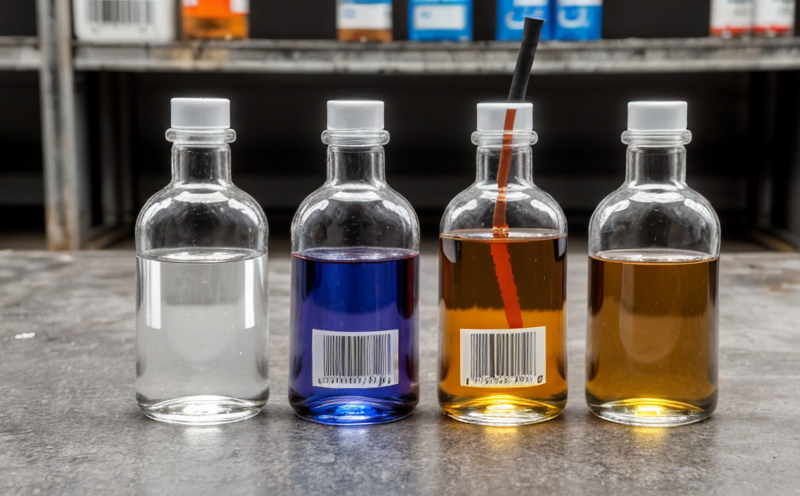JIS K7311 Rubber Ozone Stability Testing
The JIS K7311 test method is a standardized procedure used to evaluate the resistance of rubber materials, particularly those found in automotive and industrial applications, against ozone. This testing ensures that products can withstand environmental conditions without degradation, thereby enhancing product reliability and longevity.
Ozone is known for its corrosive properties which can cause oxidative stress on materials over time. By subjecting samples to controlled exposure to ozone, the JIS K7311 test assesses how well rubber materials hold up under these harsh conditions. This testing method is essential in industries where rubber components are exposed to outdoor environments or undergo significant mechanical stresses.
The test involves exposing rubber specimens to a specific concentration of ozone for defined periods while maintaining controlled temperature and humidity levels. Specimens are then visually inspected, measured for thickness changes, and evaluated based on physical property retention compared to unexposed control samples.
Accurate testing is crucial in ensuring compliance with international standards such as JIS K7311. Compliance officers must ensure that all rubber products meet these stringent requirements before entering the market. Quality managers rely on this data for product development and improvement, while R&D engineers use it to innovate new materials or modify existing ones.
The JIS K7311 test plays a pivotal role in ensuring consistent performance across various applications like tires, seals, hoses, belts, etc., which are exposed to ozone. This testing helps manufacturers maintain high standards of quality and reliability, ultimately contributing to safer products for consumers.
| Test Parameter | Description |
|---|---|
| Ozone Concentration | 50 ± 2 µmol/mol at room temperature (approximately 18-23°C) |
| Specimen Exposure Time | 48 hours ± 1 hour |
| Environmental Conditions | Temperature: 25 ± 2°C; Humidity: 65% RH ± 3% |
| Measurement Parameters | Visual inspection, thickness measurement, physical property retention analysis |
The above parameters are critical for achieving accurate results under the JIS K7311 test method. Any deviation from these guidelines could lead to inaccurate assessments of a rubber material's resistance to ozone.
Understanding the intricacies behind this testing process allows quality managers and compliance officers to make informed decisions about their product specifications. By adhering strictly to the prescribed procedures, they can ensure that their products not only meet but exceed industry expectations regarding durability and longevity.
R&D engineers benefit greatly from JIS K7311 rubber ozone stability testing as it provides invaluable insights into material behavior under extreme conditions. These findings help drive innovation in product design, leading to more efficient manufacturing processes and better-performing end products.
Industry Applications
The JIS K7311 rubber ozone stability test finds extensive application across numerous industries where rubber components are exposed to atmospheric conditions or undergo mechanical stresses. Here, we explore some key sectors:
- Automotive Industry: Tires, seals, hoses, belts.
- Construction: Seals and gaskets used in building materials.
- Electrical Engineering: Insulating components for power transmission systems.
- Petrochemicals: Rubber products in pipelines and storage tanks.
- Manufacturing: Conveyor belts, rollers, and other machinery parts.
In each of these sectors, ensuring that rubber materials withstand ozone exposure is critical for preventing premature failure, which could lead to costly repairs or replacements. Thus, JIS K7311 testing becomes a cornerstone in maintaining operational efficiency and safety standards.
| Industry | Main Rubber Products Tested |
|---|---|
| Automotive | Tires, seals, hoses, belts |
| Petrochemicals | Rubber products in pipelines and storage tanks |
| Manufacturing | Conveyor belts, rollers, machinery parts |
The consistent application of JIS K7311 testing across these industries ensures that rubber products meet the highest quality standards, contributing to safer and more reliable performance in various applications.
Quality and Reliability Assurance
Ensuring consistent product quality and reliability is paramount for any manufacturing enterprise. The JIS K7311 rubber ozone stability test serves as an essential tool in achieving this goal by providing robust data on material performance under challenging conditions.
- Data Accuracy: Provides precise measurements of specimen changes after exposure to ozone, enabling accurate comparisons with control samples.
- Compliance Verification: Ensures adherence to international standards like JIS K7311, which are crucial for market entry and regulatory compliance.
- Innovation Support: Offers valuable insights that can be used to develop new materials or improve existing ones, enhancing product performance.
By incorporating JIS K7311 testing into their quality assurance processes, companies can significantly enhance the durability and longevity of their rubber products. This leads to reduced maintenance costs, improved customer satisfaction, and increased market competitiveness.
Competitive Advantage and Market Impact
The JIS K7311 rubber ozone stability test provides a competitive edge by ensuring that products meet or exceed stringent industry standards. This is particularly important in highly regulated markets where compliance with international regulations is non-negotiable.
By demonstrating a commitment to quality through rigorous testing, companies can differentiate themselves from competitors who may not adhere to the same high standards. This enhances brand reputation and fosters customer trust, which are vital assets in today’s competitive business environment.
In terms of market impact, JIS K7311 testing helps to maintain consistent product performance across different regions and climates. This consistency ensures that rubber products perform reliably regardless of environmental conditions, thereby expanding the geographical reach of manufacturers.





